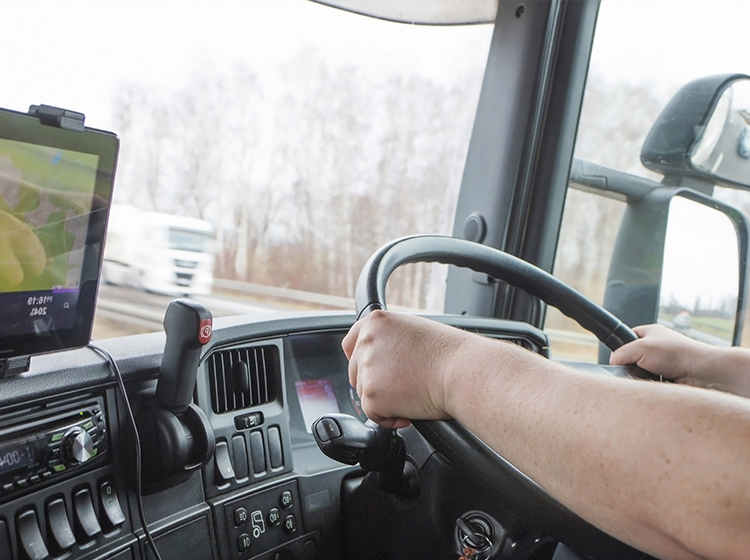Intelligent transport systems (ITS) help to improve safety and enhance the efficiency and sustainability of transportation networks. So, what are they and how do they work?
We already have cars that can virtually drive themselves, using in-built sensors to alert the driver if another vehicle comes too close, cars that can park themselves hands-free in a tight spot, and even cars which can be ‘summoned’ from the garage.
Intelligent transport systems (ITS) take that vehicular technology a little further, combining it with rapidly expanding internet of things (IoT) technology to benefit all users and modes of transport, regardless of their level of sophistication.
When applied to transport and infrastructure, these technologies create a smooth flow of information between systems for improved safety, productivity and environmental performance. ITS encompasses anything from stand-alone applications such as traffic management, to information and warning systems installed in individual vehicles. ITS also includes the more specific ‘cooperative intelligent transport systems’ (C-ITS) applications.
Cooperative ITS technology enables real-time communication between individual vehicles, or between vehicles and roadside infrastructure. For instance, C-ITS can warn a driver that a collision has just happened or is imminent, and even alert the driver to a vehicle which is braking hard but may be out of sight.

How are intelligent transport systems being used in Australia?
ITS technology is already being put to use in a range of applications:
- Active traffic management systems coordinate traffic flow through variable message and speed signs, toll-collection points and ramp signals.
- Updates on traffic and road conditions are available to drivers through vehicle GPS systems. In some instances, manufacturers are now sharing information to build a real-time model of traffic flows from data provided by individual vehicles.
- Telematics monitors the movements of an individual vehicle and can record speed, location and mass. This technology is already being used by many transport companies and as a regulatory tool for compliance and enforcement.
- Rail management systems allow controllers to run more efficient schedules due to reliable, real-time information on the location, speed and length of trains using the network.
- Seeing Machines distraction-detection technology can help to reduce the risk of fatigue-induced accidents through an onboard monitoring system.[1]
In recognition of the rapid development of ITS applications, Australian governments agreed in November 2011 to endorse a national policy framework to ensure that ITS is implemented effectively and that the technology used in each jurisdiction is compatible and developed around a set of agreed policy principles. The framework is available on the Transport and Infrastructure Council website.
Benefits of ITS technology
Intelligent transport systems have the potential to provide key benefits for Australian businesses and road users.
- Safety. Road accidents not only cause suffering and loss of life, but also cost the nation around $27 billion a year.[2] As many collisions occur due to the stop-start nature of traffic in congested areas, ITS technologies that smooth traffic flow and reduce congestion are expected to greatly impact this figure. C-ITS can provide warnings on heavy braking or potential collisions at intersections, while information provided through ITS can be used to divert traffic and alert emergency services the moment an incident occurs.
- Efficiency.Travel time and point of arrival become more reliable[3] through the monitoring of real-time data.
- Reduced costs. Smoother, predictable traffic flow [4] brings considerable cost benefits to both individual drivers and transport and supply industries through improved fuel consumption, reduced vehicle wear, less time spent in transit and more reliable delivery.
- Productivity. Traffic congestion causes flow-on delays in supply chains [5] and increases the cost of business. ITS can increase productivity through improving the capacity of current infrastructure, as well as through monitoring of vehicular performance and driver fatigue. When supported by ITS, trucks should be less likely to break down, and drivers less likely to have fatigue-induced accidents.
- Environmental performance. Less congestion and stop-start driving will result in a reduction [6] in fuel consumption and greenhouse gas emissions compared with ‘normal’ driving conditions.
Platooning for greater efficiency
Trucks from six major European manufacturers (Daimler, Scania, IVECO, MAN, DAF and Volvo) recently demonstrated vehicle platooning[7], where Wi-Fi-connected trucks travel in close convoy for increased efficiency and safety.
Each truck in a platoon has its driver in control, but the Wi-Fi connections mean the trucks are synchronised, so when the lead truck brakes or swerves, all the trucks in the platoon respond at once. By driving closely behind each other, the trucks benefit from decreased wind resistance and therefore greater fuel economy, which not only saves operators’ money but reduces carbon dioxide emissions.
Australia will be hosting the 23rd ITS World Congress in Melbourne in October 2016, with the theme ‘ITS – Enhancing Liveable Cities and Communities’.
Global Heavy Vehicle Leaders Summit, May 2016
[1]Seeing Machines website, Advanced Driver Fatigue and Distraction Detection, accessed 23 September 2016.
[2]Australian Government, Department of Infrastructure and Regional Development, Research Report 140, accessed 23 September 2016.
[3]Australian Government, Department of Infrastructure and Regional Development, Benefits of Intelligent Transport Systems, accessed 23 September 2016.
[4]Intel website, ‘Intel Inside® Efficient and Smart Traffic Outside’, accessed 23 September 2016.
[5]Australian Government, Department of Infrastructure and Regional Development, as above.
[6]United States Department of Transportation website, ‘ECO-ITS: ITS Applications to Improve Environmental Performance’, accessed 23 September 2016.
[7]Jonathan M. Gitlin, Ars Technica, 4 August 2016, ‘No more two-lane highway headaches? Europe demos semi-autonomous truck platoon’, accessed 23 September 2016.
Viva Energy's products are transported all over Australia.
Find out more about them here